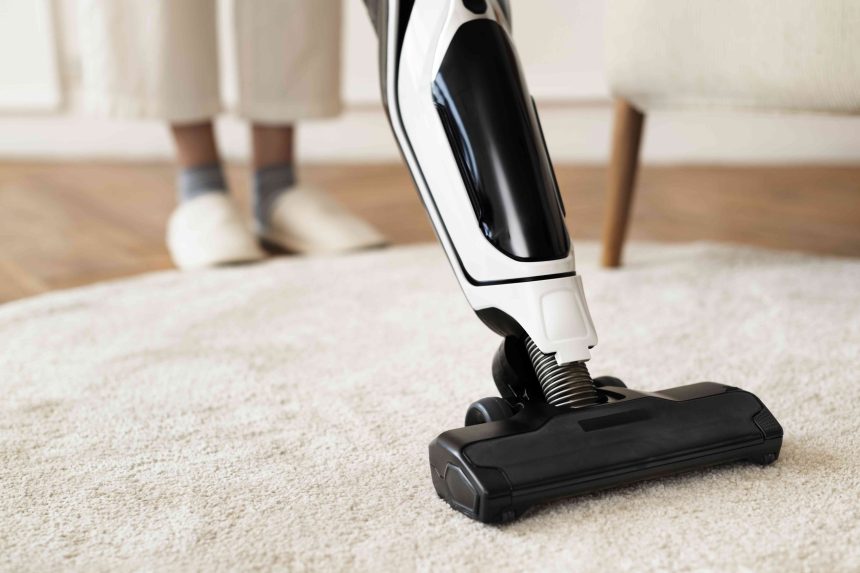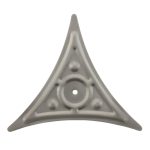While the process of vacuuming may seem pretty self-explanatory, there are a few commonly made mistakes that people fall victim to when using this household appliance.
We turned to two cleaning professionals who weighed in with some of the common pitfalls associated with vacuuming as well as what to do instead. Get ready to look at your vacuum cleaner in a whole new light!
Not Adjusting Settings Based on Surface
Jaromir / Getty Images
When vacuuming, it’s important to remember that different surfaces in your home require different settings for efficiency’s sake, Vanessa Terra Bossart, the founder of Green Terra Cleaning, notes.
This means that depending on whether your flooring is carpet, hardwood, or tile, you will need to adjust settings accordingly. This isn’t just a critical step when for functionality’s sake; not adjusting your settings can have more detrimental effects, like reducing suction efficiency, damaging your surfaces, and more, Bossart explains.
A good guideline to follow when vacuuming is to use the brush roll on carpeted surfaces and to turn it off and/or use the bare floor setting when vacuuming hard surfaces, Bossart shares, noting that the brush roll can create scratches in this instance.
Want more cleaning and organizing tips? Sign up for our free daily newsletter for the latest hacks, expert advice, and more!
Not Maintaining Vacuum Bags or Dust Containers
Bossart encourages people to be mindful of the status of their vacuum bags or dust containers.
“For vacuums with bags, waiting until the bag is completely full might seem like a way to save, but it significantly reduces suction power, negatively impacts performance, and shortens the vacuum’s lifespan,” she says.
Instead, make a habit of replacing your vacuum bag when it’s around 60 percent full, Bossart notes.
As for bagless models, you also don’t want to hold off on emptying your vacuum for too long—when it’s about 75 percent full, you should address it, Bossart states. She explains that letting the dust container fill all the way up will strain the motor and filtration system.
Not Cleaning or Replacing the Filter Regularly
Boy_Anupong / Getty Images
In addition to paying attention to your vacuum bags or dust containers, you will want to consider the filter as well and make sure that it is not clogged or dirty, Bossart states.
“A clogged or dirty filter decreases the vacuum’s suction power and can even recirculate dust and allergens back into the air,” she says. “This not only reduces cleaning effectiveness but also impacts indoor air quality.”
Bossart recommends washing out reusable filters every few months to keep them well-maintained and replacing disposable ones as frequently as you see fit. She adds that your vacuum’s user manual should state the appropriate filter cleaning or replacement schedule for your particular machine, if you need extra guidance.
Not Using the Right Technique
As it turns out, there is a specific technique for vacuuming that many people do not follow but should.
“Make sure you move slowly towards the right/left while running your vacuum, and then run it back but this time in a straight line,” Steve Evans, the founder of Memphis Maids, explains.
He encourages repeating this process until the entire floor is covered, meaning you will have gone over the area twice.
Not Cleaning the Brush Roll
Remember the brush roll we were talking about earlier? It’s important that this piece of the vacuum is cleaned appropriately.
Evans notes that this attachment will often pick up hair from carpets, particularly if you have pets in your home. To clean it off, grab some scissors and cut the hairs off as needed, he suggests.
Not Buying a Quality Vacuum
Vacuum cleaners can most definitely cost a pretty penny. However, it is in your best interest to purchase the best vacuum that you can afford, as doing so will make all the difference.
“A good vacuum cleaner is a great investment,” Evans says. “They work faster, are quieter, and easily last 10 to 15 years.”
He reiterates that investing in a nice machine is even more important if you have pets in your household.







